A Revolutionary Moral Calendar
Fascinating French Revolutionary calendar that exemplifies the morals and innovative zeitgeist of the period.
The map uses the Republican Calendar, a French Revolutionary-period construction that sought to replace the Gregorian calendar with a scientific substitute. In the Republican Calendar, twelve months are introduced, each with 30 days. At the end of the year, five extra days are tacked on and referred to as "complementary days." The months are all given new names, such as "Thermidor" (summer heat in late July and early August) "Pluvoise" (the rainy season in late January and early February), or "Brumaire" (the misty season in late October and early November). The year starts and ends with the Autumn equinox, and the weeks are ten days long.
The calendar tracks the months of the year while showing the sunrise and sunset times at various points throughout the year. Various allegorical representations of the months appear, including a canine in late summer exemplifying the "dog days."
The creation of a new calendar system, the Republican Calendar, is one example of the many ways the French revolutionaries sought to reconfigure society, going as far as to reimagine the way time was understood and measured. The Calendar was introduced in 1793 and used until 1805, during the height of the French Revolution. It aimed to remove all religious and royalist influences from the calendar, to reflect the changes brought by the Revolution and to emphasize rationality, secularism, and natural cycles.
The "moralistic" aspects of the calendar appear somewhat shoehorned into the author's description of the map, reinforcing the idea that they may be present only to conform to the predominant revolutionary norms. Titled "Moral Ideas that this Picture Presents," they argue that the calendar serves to remind the reader of how to best use the trials and tribulations of their mortality:
This work would be incomplete if it only presented picturesque forms and astronomical calculations. But when considering it in terms of the vicissitudes and brevity of life, it offers a striking lesson to the man who would be tempted to misuse time that will escape him without return, and becomes a new source of encouragement for the one whose regular and always active conduct lets no moments of his life pass without putting them to good use. Everything speaks to the attentive man. The 4 stages of human life, one of the longest of which is 72 years (b), naturally paint themselves in the full year divided into 4 parts of 3 months each. The first 3, clouded over, mark the weakness of childhood, an image of misery and pain, struggling against the dangers that besiege it from the cradle. The second 3 represent the man freeing himself from the darkness of ignorance, which, like clouds, obscures his reason. He is then surrounded by a purer light, but even in the serenity of his best days, he is not safe from the reversals attached to humanity and of which lightning is the image. The following indicates the almost equal state in which the man finds himself from 56 to 64 years, the time at which begins to extinguish the burning ardor of the passions that create storms, where more peaceful, he learns to judge, to know himself, and to enjoy himself in the calm of meditation. Finally, the last 5 announce that life, like the year, is reaching its end. The darkness of the day, the horror of the long nights, everything predicts for him troubles, sufferings, and death.









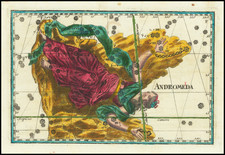
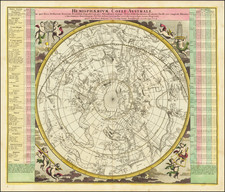
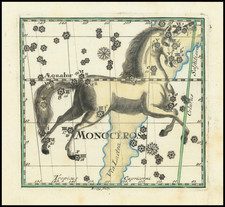
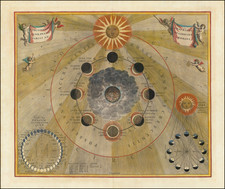
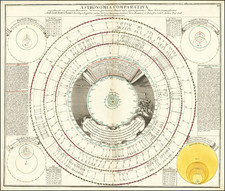
![[Six Star Charts] The Stars, in Six Maps, on the Gnomonic Projection, revised by the Rev. W.R. Dawes. . .](https://storage.googleapis.com/raremaps/img/small/78480.jpg)